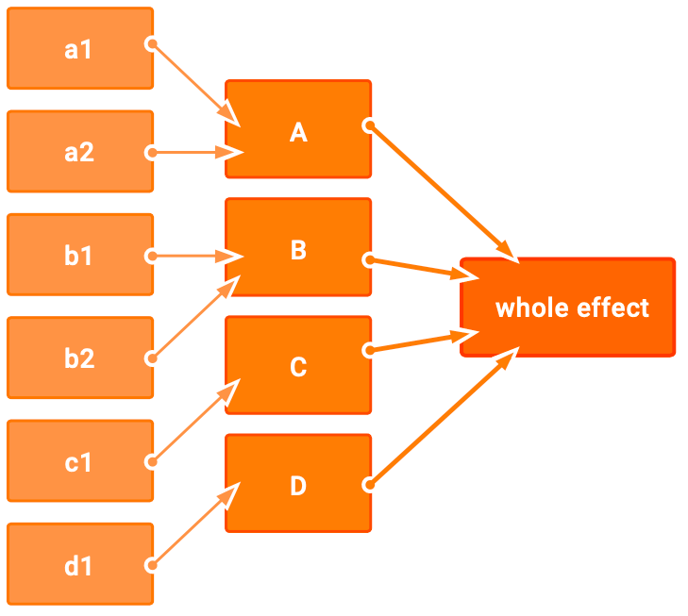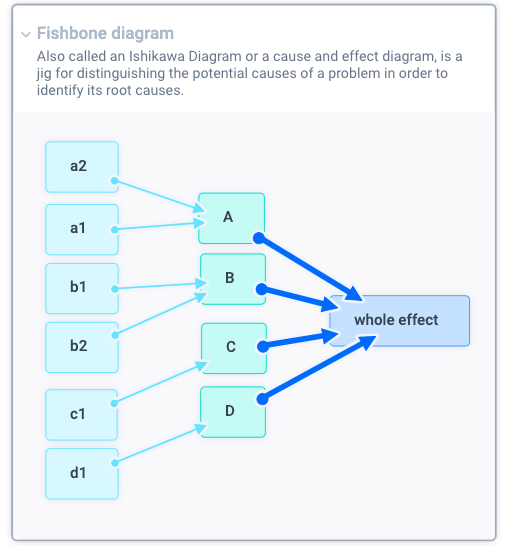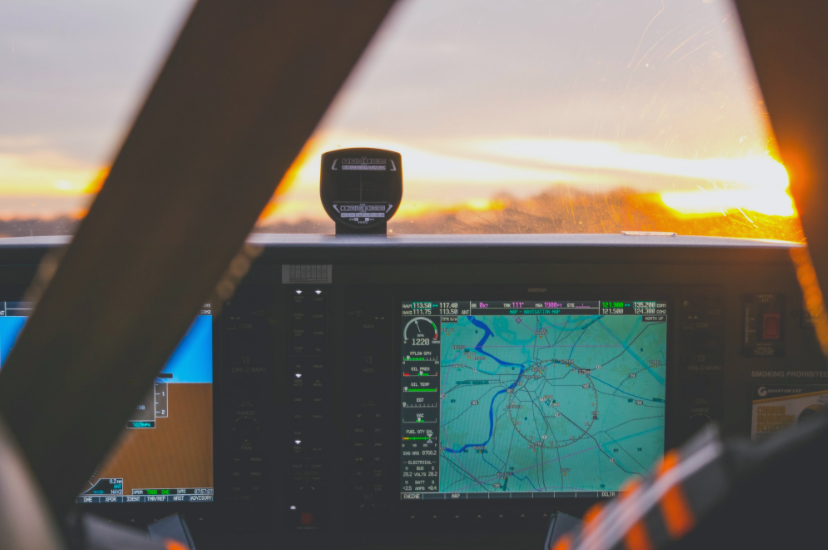Jig: Ishikawa or "Fishbone" Diagram
 Derek & Laura Cabrera
·
1 minute read
Derek & Laura Cabrera
·
1 minute read
Excerpt from the book: Systems Thinking Made Simple, Chapter 8
This blog is part of a set of blogs under the tag "cognitive jigs." Be sure to check out the tag to read them as a group and learn how cognitive jigs are at play in our everyday lives.
Relational maps such as Ishikawa or “fishbone” diagrams (See Figure 8.9) are maps with repeating part-whole and relational structures. In an Ishikawa diagram, each part is causally related to its whole in a repeating chain. The purpose of Ishikawa diagrams is to show all the nested causes that lead to an effect.

Based on DSRP, Plectica can easily model these structures (See Figure 8.10). The same Ishikawa diagram in Plectica shows the distinctions, part-whole relationships and fractal dynamics more clearly. Plectica can extend systems thinking by detailing the relationships, further deconstructing the systems, and adding perspectives. We can see that the structure flows from small part-causes to larger ones, culminating in a whole effect.

We can see that a fishbone map is a simple repeatable pattern: parts pointing causally toward their wholes. We also clearly see that we are dealing with a single system made up of parts, which is not well communicated in the original fishbone diagram (Figure 8.9), as the endpoint label on the right actually contains all the other elements and relationships in the map.
 Plectica
Plectica

.png?width=150&height=150&name=CRL%20GOAT%20Logo%20(4).png)


